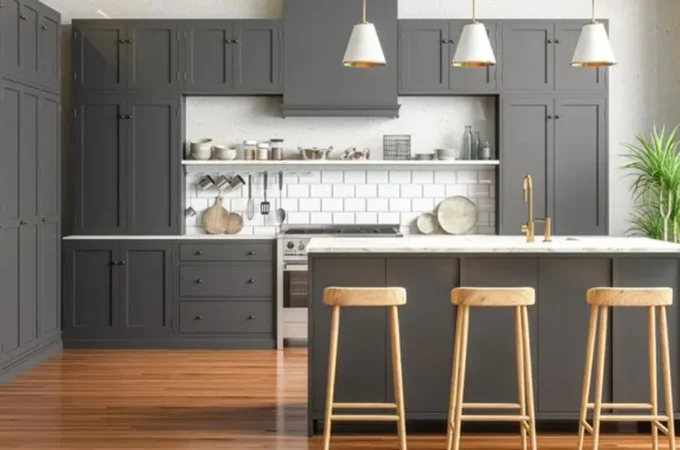
Practical Tips to Enhance Your Home’s Energy Efficiency
Improving your home’s energy efficiency not only reduces monthly utility expenses but also creates a more comfortable living environment for your family. Many people think energy efficiency upgrades require massive investments or complete renovations, but even minor changes can add up to surprisingly big savings. Instead of viewing energy efficiency upgrades as daunting or expensive, consider how small, targeted improvements can make a noticeable difference, both immediately and over the long term. Making simple, strategic upgrades can add long-term value and sustainability to your property, increasing the resale value and appeal to potential buyers. Homeowners who take steps to enhance efficiency often enjoy benefits such as reduced energy waste, a lower carbon footprint, and access to extended equipment coverage like the Daikin HVAC replacement warranty. Beyond the financial savings, enhancing home energy efficiency is also a responsible choice for the environment, as it helps lower greenhouse gas emissions. Every step towards improved efficiency moves you closer to a more sustainable, comfortable, and future-ready household.
By understanding the areas of your home that have the biggest impact on energy consumption, you can prioritize upgrades and habits that lead to measurable improvements. The key is to target areas with the fastest payback and the biggest difference in comfort, such as your HVAC system, insulation, windows, and everyday electricity use. Targeting the right efforts—such as addressing insulation, upgrading appliances, and adjusting usage habits—helps you achieve the highest return on every dollar spent. This approach is both cost-effective and environmentally sound, making it a smart strategy for any household seeking to support a cleaner future. Whether you’re concerned about your monthly outlay or your contribution to climate change, focusing on efficiency empowers you to make smarter choices throughout the year. Each improvement not only improves efficiency but also makes your home more resilient in the face of rising energy costs and fluctuating weather conditions.
Adopting smarter habits isn’t just about saving on bills—it’s about taking charge of your home’s performance and comfort. From investing in cutting-edge technology to simple changes in daily routines, every effort counts toward a more efficient home. Not only will you see lower utility bills, but you may also notice other improvements: fewer drafts, more consistent temperatures, and even less noise from your HVAC system working overtime. Over time, these changes improve health and overall well-being by fostering a cleaner, more stable indoor environment. For families, maintaining a more consistent home temperature can lead to improved sleep and greater comfort, ultimately enhancing their quality of life.
Government programs and reputable publications offer additional guidance and rebates for individuals seeking to make these changes, thereby supporting the broader adoption of energy-smart practices among homeowners nationwide. Researching local and national resources may reveal incentives you weren’t aware of, such as tax credits or special loan programs for upgrades like insulation, energy-efficient equipment, and solar panels. State and local governments, as well as certain utility companies, often offer additional rebates, free assessments, and convenient financing to help you manage costs. Learn more at Energy.gov for comprehensive advice and tools designed to help you plan and prioritize your home improvement journey. Taking advantage of these programs can make even ambitious upgrades more accessible, encouraging more people to contribute to a greener future.
Table of Contents
ToggleUpgrade to Energy-Efficient Appliances
Outdated appliances can drain energy and increase operating costs, especially as components wear down and become less efficient over time. By choosing ENERGY STAR-certified refrigerators, washing machines, and dishwashers, you can cut usage by up to 40% compared to older models that lack today’s improvements in design and technology. That means not just lower monthly bills, but also decreased environmental impact, as these appliances often use less water as well as less electricity or gas. These newer options are engineered for advanced performance and lower emissions, helping homes move toward greener living by default. Investing in such appliances pays off quickly through lower utility bills and gives you peace of mind, knowing you’re consuming less energy for daily chores. The Consumer Reports team provides detailed appliance ratings and savings calculators to support informed purchasing decisions, enabling you to estimate potential annual savings before making a purchase. When replacing any appliance, check the yellow EnergyGuide label for the expected annual energy use and compare it to your existing equipment to measure the overall impact. Focusing on appliances that run frequently, such as refrigerators and clothes dryers, delivers especially fast payback.
Seal and Insulate Your Home
Gaps around windows, doors, and ductwork allow conditioned air to escape, making your HVAC system work harder and increasing your energy bills. Even small cracks can add up to the equivalent of leaving a window open year-round, leading to ongoing energy waste. Drafts and leaks can make certain rooms difficult to keep at a comfortable temperature, regardless of your thermostat settings. Applying caulk or weatherstripping on leaky doors and windows, and boosting insulation in your attic, basement, and crawl spaces can increase your home’s energy efficiency by as much as 15%. Adding attic insulation or sealing ductwork often has a rapid return on investment and can sometimes be completed in a weekend. Taking these steps helps trap warm air inside during the winter and keep cool air in throughout the summer, making your system more effective and your home more livable. Sealing your envelope not only saves money but also creates a quieter and more comfortable home environment year-round by limiting outside noise and stabilizing interior conditions.
Install a Smart Thermostat
Smart thermostats make it easy to manage your heating and cooling system efficiently, giving you control from your smartphone or through voice commands with compatible virtual assistants. By learning your daily routines and preferences, these devices can automate temperatures and identify opportunities to save—such as lowering the temperature while you sleep or are away. Lowering the temperature by 7–10°F for at least eight hours each day can cut annual heating and cooling bills by up to 10%, as recommended by the U.S. Department of Energy. These devices often come with user-friendly apps and proactive energy-saving tips. Many smart thermostats also provide insights into your usage patterns, helping you make further adjustments to save money and energy. Some models offer geofencing to detect when you’re approaching home and adjust temperatures in advance to maximize efficiency and comfort. With easy installation and almost instant feedback on your energy usage, these thermostats are one of the easiest home upgrades to justify.
Optimize Window Treatments
Windows account for a significant portion of heat gain and loss in a structure, even when closed. In the winter, open the curtains on south-facing windows to allow sunlight to naturally warm your home, and close them at night to retain the warmth. This can reduce your dependency on your furnace and cut down heating costs. During hotter months, blackout curtains or reflective blinds can help keep interiors cooler and reduce the demand on your air conditioning, which in turn helps extend the lifespan of your cooling equipment. Efficient window treatments can also block UV rays, reducing the risk of fading and protecting furniture and floors. Insulated curtains help create a more peaceful, temperature-controlled environment. Adding cellular shades or layered drapes provides both insulation and style, making them a worthwhile upgrade for both comfort and aesthetics.
Consider Solar Panels
Solar panels enable homeowners to harness clean, renewable energy, making a lasting investment in carbon reduction and reducing their reliance on fossil fuels and local power grids. While the installation cost is a consideration, tax incentives and utility rebates are making solar more accessible and cost-effective for average households. Over time, homeowners can see a significant drop in their monthly energy costs while contributing to energy independence, especially if your local climate offers plenty of sun. Additionally, excess electricity generated during peak sunlight hours can sometimes be sold back to the grid through net metering programs, further accelerating the return on your investment and helping support your local utility network. Solar systems typically require minimal maintenance, relying primarily on routine cleaning and occasional inspections.
Upgrade Your Water Heater
Heating water is the second-largest expense in most households after heating and cooling the air. Standard tank water heaters can be especially energy-intensive, losing heat through standby loss. Upgrading to an ENERGY STAR-certified heat pump water heater can save a family of four as much as $425 per year by using technology that transfers heat instead of generating it directly. These models use less energy, provide a consistent supply of hot water, and are often quieter and more reliable than older tank models. Regularly servicing your water heater and lowering the temperature to 120°F can also help reduce further energy waste. Newer models often fit in the same space as old tanks and usually connect to existing plumbing, making installation straightforward.
Switch to LED Lighting
Lighting represents an easy, high-impact change for home efficiency. Transitioning from incandescent to LED bulbs can reduce your lighting energy use by 75%. Because LEDs generate less heat, they put less strain on your air conditioning during the summer. Modern LEDs also last up to 25 times longer than incandescent bulbs, resulting in fewer trips to the store and less waste in landfills. This seemingly simple change decreases the frequency and cost of replacements, making your home more sustainable and further shrinking your household’s overall energy footprint. LEDs also come in a variety of colors and temperatures, so you can customize your lighting for both function and ambiance.
Adopt Energy-Saving Habits
Not every improvement requires upfront investment—consistently unplugging idle electronics, washing clothes with cold water, and running appliances during non-peak hours can collectively make a significant impact. Developing routines, like turning off lights when you leave a room or adjusting blinds throughout the day, can reinforce your commitment to efficiency. Small, daily choices add up, reinforcing the effectiveness of your more substantial home upgrades. Involving everyone in your household and setting goals for energy reduction can help these habits stick, and over time, these actions contribute to a culture of sustainability that extends beyond your home’s walls. Even a few minutes of mindfulness each day can help reorient your habits toward long-term savings. By applying these strategies and making informed choices about appliances, insulation, smart systems, and simple habits, you’ll support greater energy efficiency, savings, and sustainable living for years to come.






